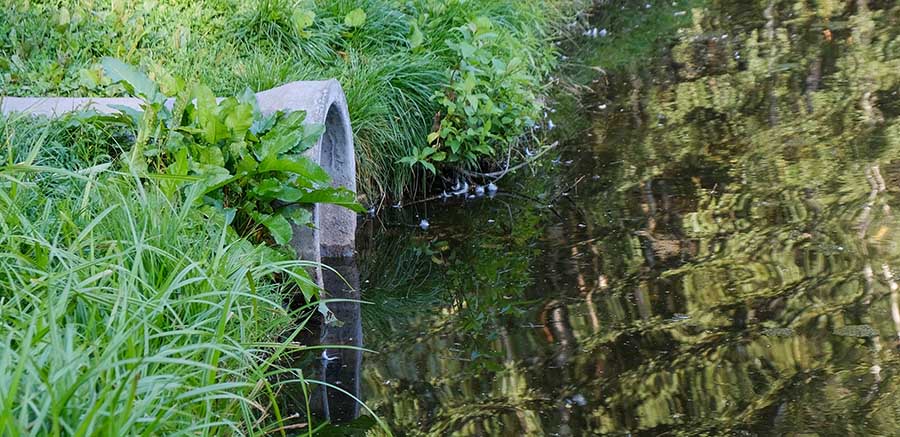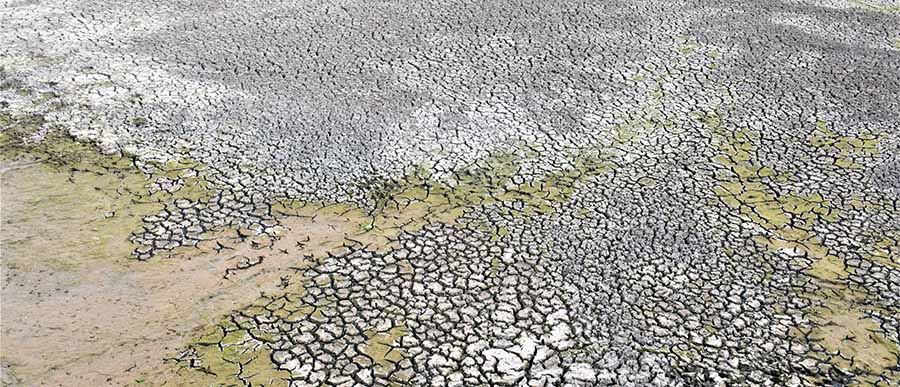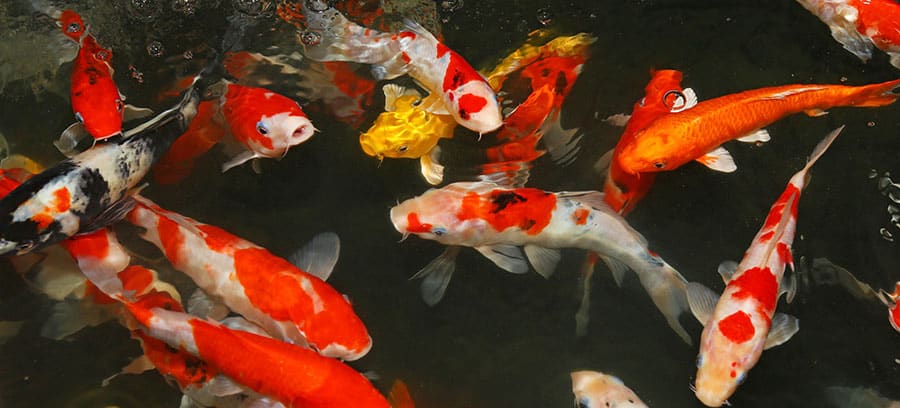A pond is an ecological hotspot. But sometimes ponds can be burdensome, especially if they’re in your own backyard. Your backyard may become overgrown or home to some unseasonable wildlife with a pond. The solution to your problems may be drying out your pond.
Drying out a pond takes time and money. Depending on your available resources and equipment, you may need a large budget for drying out your pond.
Having a pond requires a lot of upkeep and taking care of a pond can be particularly taxing. The option to dry out your pond will not only reduce your workload but provide other benefits to your yard. It only takes five simple steps to dry out your pond. So, let’s get started!
Calculate the Size of Your Pond
First, you have to know your pond’s size. Even if you have a relative idea of how large the pond is, it is best to double check your estimates.
For smaller ponds, a tape measure will work just fine. For larger ponds, you will want to use a laser or wheel measurement tool. See the next step on the best tools for the job. If you already know your measurements dive in.
How to calculate your pond’s size:
Surface Area Calculations:
- Acres: Multiply length times width divided by 43, 560 – You may need to modify this equation if you have a round or elliptical shaped pond
Volume Calculations:
- Acre-Feet: Acreage multiplied by average depth, where average depth is max depth divided by 2
- Gallons: Acre-feet multiplied by 325,829
Drain Your Pond and Get Rid of All the Water

Once all your equipment is ready and calculations done, you are ready to start working on site! Depending on the size of your pond, draining the water can be a lengthy process. There are a few things to consider for getting the water out of your pond.
Considerations when draining the pond:
- The larger the pond, the longer it will take
- Can you easily work around the surrounding landscape’s features?
- If you pond is dammed, removing the dam will let the water naturally flow out
- If your pond sits at the top of a slope, you can dig a trench, so the water flows downhill
- Consider using a service to pump out the water
- Or, consider buying a pump to drain the pond water
Other things to keep in mind about your pump:
- Keep an eye on the water level, most pumps don’t have an automatic shut off
- Remember to refill the pump’s fuel tank every few hours
- Check the oil on your pump before each use
- Always read the pump’s manual before getting started
Rescue Any Wildlife or Vegetation that May Be At-Risk During Draining
The ecosystem of a pond relies on the water in the pond to survive. If you drain the pond the critters have to leave and the vegetation around the pond begins to deteriorate and may eventually die.
To be a successful, healthy pond, there are some basics your pond has to have. These basics have been researched and fall under a science known as pond ecology.
Some quick pond ecology basics to a healthy pond:
- Ponds need clean, unpolluted water
- A balance of nutrients is required to keep a pond healthy; nutrient imbalance can cause mucky, brown ponds
- Ponds serve aquatic and terrestrial critters in a variety of ways: shelter and protection, housing, food and drink, and more
- Vegetation is vital to keeping a pond aerated and filtering out toxic elements
If your pond has a high number of fish, consider relocating these fish to a nearby pond. Use a seine or net to catch and release the fish into a nearby waterway. The same goes for any other larger critters that can’t survive outside of water.
Do It Right and Be Mindful of the Environment
Keep in mind you do not want to spread invasive species, so if your area has any invasive aquatic plants, parasites or fish, please do not relocate these organisms and risk spreading an invasive species.
Additionally, some states have laws that prohibit transplanting wildlife. Always check with your local fish and wildlife service to make sure it is safe and legal. If it is illegal to transplant, you can communicate with the landowners of other ponds and discuss your options.
If you plan to dry out your pond to restore the habitat and ecosystem to create a healthier environment, you may consider trying to salvage some of the surrounding vegetation. However, the wonderful thing about nature is that most of the time, if you build it the critters and plants will come, so maintaining or salvaging pond vegetation is not a priority. A helpful source is the FAQ document from Freshwater Habitats Trust here.
Let the Land Dry Out

Now that you’ve drained the pond and got any critters out, you want to let the land dry out. This final step can take a long time and is dependent on multiple factors.
Drying out takes time and is dependent on:
- Current weather conditions – Is it rainy season? Or, are you in a drought?
- Time of year – Spring is historically wetter than fall in most places.
- Surrounding landscape features – Does your pond sit in a valley? Is there an aquifer or groundwater that feeds into your pond?
- If the pond was spring fed – Spring fed ponds will be very difficult, if not impossible to dry up, unless you invest a lot of money.
- Or, if your pond was low in the watershed – Similarly, water flows down, so low in the watershed increases the chance of refill.
If your pond is at the bottom of a slope or valley, or is spring fed, there is a larger chance it will fill with water again. If your goal in drying out your pond is to remove the pond from your land for good, then you have a few things to consider.
Options to avoid your pond refilling with water:
- Fill in the pond with dirt – Fill is not cheap, keep this in mind when planning
- Lengthen the slope on the land – This way water continues running down through the watershed
- Introduce permaculture – Fruit and nut trees and bushes to fortify the soil and avoid erosion
You have a few options to avoid the pond from refilling with water from natural sources.
If that is not the route you want to take, and you are draining your pond to restore the ecosystem, you have some more work to do.
Pick the Best Equipment for Drying Out Your Pond
There are a lot of tools and equipment to use when draining your pond. All of your needed equipment is really dependent on your pond’s size; hence the first step was doing those calculations.
The essentials for drying out a pond:
- Tools for measurement – From a small to large pond, you want to know its size
- Backhoe or shovels – You’re probably going to do some digging!
- Water pump – More on this later!
- Good work boots or gaiters – It is a wet and mucky, be prepared.
- Large netting – If you want to catch any fish, get your net ready.
The most important items on this list are your measuring tools and pump. These will be major purchases and you want to weigh all the options.
Measuring Tools: Finding the Best Options
Buying the right tool for the job is important. Taking measurements is no exception! Below are three options for laser measurement tools, finally there is one measuring wheel mentioned, if you’re looking for rough estimations of distance. All of them are available on Amazon.
High-End Laser: BOSCH GLM400CL Blaze Outdoor Laser Measure
- 400 ft range
- Built-in camera with zoom
- Designed for the outdoors
- 11 measuring functions including, distance, area, volume and indirect.
Mid-Range Option: TACKLIFE S3-100 PRO Laser Measure
- 328 ft range
- Back lit display
- Rubber covering
- Calculates angle, distance, area and volume automatically
Purchase on a Budget: MAKINGTEC Laser Measure
- 196 ft range
- Battery powered
- LED display
Measuring Wheel: Zozen Collapsible
- 0-9,999 ft range
- Lightweight and portable
- Easy to measure around curves
- Can measure indoor and outdoor environments
Again, depending on your needs any of these options are well rated. Wheels are great for ponds without straight edges. Lasers offer quick and easy measurements.
Got to Dig: Where to Find the Best Equipment
Digging is an essential part of most pond removals. Sometimes you can get around this step if there is nowhere for your pond water to flow. For instance, if your pond sits at a low section in your watershed.
Your two options for digging:
- Heavy duty equipment – Backhoes and dump trucks may be necessary depending on the scale of your project
- Good, old-fashioned shoveling – Easy to get and most people already have access to them
Finding heavy duty equipment:
- Talk to your neighbors – They may know a good company to recommend
- Check in with your local home improvement store – Call to see if they rent out larger equipment, if not maybe they can suggest someone who does
- Chat with a tractor dealer or construction company – Most likely to have many options, renting may even be among them
- Look to buy online – Many websites are out there for buying or trading in large-scale equipment
Remember, if you decide to go with the old-fashioned shoveling option, you should budget more time and labor for the entire project.
What Pumps are Best to Use to Dry Out a Pond

When drying out your pond, you may want to invest in some large-scale equipment. Since the amount of work involved in draining is very dependent on pond size and the surrounding landscape, a comparison of the best pumps for your pond is in order.
You’ll want to know your pond’s size to pick the best pump for the job. You can save a few bucks if you pick a pump that is smaller than you previously thought you needed.
What type of pump do you need to buy?
- Clean water pump – designed to pump out water that is always clean, great for pools
- Semi-trash pump – designed to pump out water with small particles (up to a ¼-inch)
- Trash pump – designed to pump out water with large debris (between ¾ and 1 ¼ inches)
Finding the best pump for your needs can be difficult. Below are three options from Amazon that are the best in their price range. Keep in mind the faster you want to pump out water the more expensive the pump.
High-End Option: NorthStar Self-Priming Semi-Trash Water Pump
- Pumps 23,040 gallons per hour
- Can handle debris up to ¾-inch
- Honda engine
- Reputation for long-lasting pumps, high quality and performance
Mid-Range Choice: Generac 6822, Semi-Trash Water Pump
- Pumps 158 gallons per minute
- 3.4-gallon fuel tank
- Shuts down when low oil is detected
- Can handle muddy and sandy water
Budget Buy: Champion 66520 2-Inch Gas-Powered Semi-Trash Water Transfer Pump
- Pumps 158 gallons per minute
- Can handle debris up to 9/16-inch in diameter
- Champion engine
- Low-oil shut off
The pump will mostly likely be your highest expense for draining your pond. Always read reviews before you purchase to double check the product will meet your needs.
Additionally, instead of buying equipment, renting might be a more suitable option, especially if you plan to finish pumping in a few days.
Prep to Catch Your Fish: How Best to Perform this Task

If you have fish in your pond you would like to save, especially if the pond doesn’t drain into another water source, having a way to collect them is important.
Steps to catch fish with a net:
If your draining by opening your dam:
- Set up your net or seine near where the water will be exiting the pond.
- Wait while water flows out of your pond, until you’ve caught all your fish.
If you are pumping water out:
- Wait until most of the water is removed before deploying the net.
- Remove the net once the water is too low for the fish to survive and rehome.
This may be unnecessary if your pond is not stocked, or so overgrown that fish cannot survive
Comparing the Restoration of a Pond versus the Complete Removal of a Pond
Now that your pond is dried out, you have two options. You can choose to restore the pond, or you can remove the pond completely. Because this can be a hard decision to make, you really need to consider what is important to you in regard to the positives and negatives surrounding a pond on your property.
| Pros | Cons | |
| Restoring the pond after drying out | Provides a nice swimming hole and recreational siteFun for all agesCreates new habitats that are healthier for the environment overallIs a beautiful landscape featureCan be a selling point, if you may be selling the property | This is a long-term projectRequires permitsDevelopment of an action plan is imperative for successMust consider ecology and history of the areaRequires significant upkeepCan become a very expensive project |
| Removing the pond completely | Reduces yard upkeepOpens up more space for other activities and usesReduces potential hazards, especially in terms of young kidsExpands space for building | Loss of habitat and wildlifeCan be expensive to fill inTime consuming process depending on the size of the pond |
Benefits of Drying Out Your Pond
Draining your pond can have many benefits. And draining your pond will have lasting impacts on the surrounding environment.
Advantages to drying out your pond:
- Reclaim land for its original use, especially if it was a man-made pond – The Natural Resources Conservation Service may have information on the original land use if you are interested
- Building new structures – Your property may be in need of a new shed, barn or garage and the site of your pond may make a great foundation
- Increased space for forest or grasses – Once you drain a pond and fill it, you can let the nature reclaim the land; plants always find their way to open spaces and fertile soil
Drawbacks of Drying Out Your Pond
In addition to the many benefits, there are some drawbacks to draining a pond. Mainly due to the impacts that draining a pond have on the environment.
Disadvantages to drying out your pond:
- Loss of habitat for wildlife – The space they used to occupy has been destroyed, wildlife will relocate or die
- Loss of a water feature – Water is peaceful and known to reduce stress; no longer a recreational site
Sometimes you have no choice but to get rid of your pond, particularly if your pond was an eyesore, outrageously overgrown and unhealthy, or breeding ground for mosquitoes.
Summary
Because drying out a pond only takes five steps, you can very easily get this work done in a week or a little longer, depending on the pond size and local and regional permit requirements.
Drying out a pond can be a complicated job, especially if you have a spring-fed pond, it is best to address these concerns before breaking ground. Once your land is dry, you are ready to repurpose the land or restore the pond!

